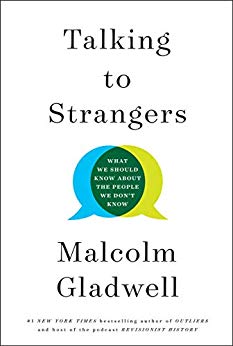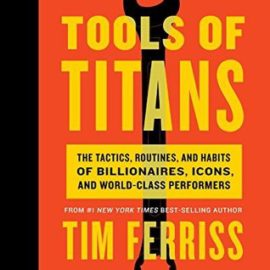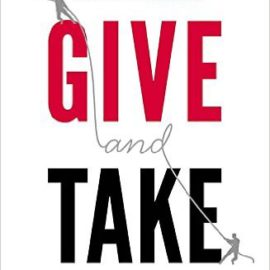
Want to learn the ideas in Talking to Strangers better than ever? Read the world’s #1 book summary of Talking to Strangers by Malcolm Gladwell here.
Read a brief 1-Page Summary or watch video summaries curated by our expert team. Note: this book guide is not affiliated with or endorsed by the publisher or author, and we always encourage you to purchase and read the full book.
Video Summaries of Talking to Strangers
We’ve scoured the Internet for the very best videos on Talking to Strangers, from high-quality videos summaries to interviews or commentary by Malcolm Gladwell.
1-Page Summary of Talking to Strangers
Overview
The following version of this book was used to create the guide: Gladwell, Malcolm. Talking to Strangers: What We Should Know About the People We Don’t Know. Little, Brown and Company, 2019. This book is divided into five parts that include 12 chapters in total each sectioned off by numbers that form a compare and contrast argument style.
In the introduction, “Step out of the car!”, Gladwell tells us about Sandra Bland and a Texas State Trooper’s encounter. She had just moved to Prairie View from Illinois and was unfamiliar with her surroundings. The trooper noticed that she wasn’t familiar with where she was going, so he pulled her over for not signaling before changing lanes. Their interaction grew volatile when Encinia forcefully removed Bland from her car because he thought she was being uncooperative. He then called for backup and arrested her for resisting arrest. Three days later, Bland committed suicide in jail after spending three days there without any contact from family or friends. Gladwell wants to know what went wrong in this situation through his book Talking To Strangers.
In Part 1, Gladwell talks about the CIA and Fidel Castro. The CIA had so many spies in Cuba that they were oblivious to the fact that all of them were actually working for Castro. In Part 2, Hitler made a deal with Chamberlain where he promised not to invade Czechoslovakia if Chamberlain allowed him to take over Sudetenland. However, Hitler broke his promise and invaded anyway. These stories show us how hard it is for humans to know when someone is lying or telling the truth because people are really good at pretending like they’re honest even though they’re not.
In Part 2: “Default to Truth,” Gladwell introduces psychologist Tim Levine’s theory. Levine states that people generally believe those they interact with are honest. To doubt someone, the person must have a significant amount of reason to do so. Belief and doubt go hand in hand, as illustrated by stories of double agent Ana Montes and sexual abusers Jerry Sandusky and Larry Nassar. People didn’t want to believe these three were guilty because they had no evidence against them; therefore, they dismissed the allegations against them.
In Part 3: “Transparency,” Gladwell uses a scene from the popular sitcom Friends to explain the idea of transparency. In this scene, Rachel is trying on her wedding dress and everyone can see how happy she is. The audience can tell by watching her facial expressions and body language that she’s in love with Ross. However, not all people are like Rachel; some people aren’t so easy to read because their emotions don’t match up with what they’re saying (like Amanda Knox). When Knox was studying abroad in Italy, she got into an argument with her roommate Meredith Kercher about toilet paper being taken out of the shared bathroom. Later on that night, Meredith was murdered and Knox became a suspect. She didn’t act like someone who had just lost their best friend would behave – which made police officers suspicious of her guiltiness. Because there wasn’t any physical evidence linking Knox to the crime scene or murder weapon, police decided they needed more proof before arresting her for murder – but at this point it was too late for them to find anything else since most evidence had been cleaned away by housekeepers after discovering Meredith’s body when coming into work early one morning.
In Part 4, “Lessons,” Gladwell examines the capture and interrogation of Al Qaeda member Khalid Sheikh Mohammed. He suggests that torture may not work as well as we think it does because tortured people are so traumatized they can’t remember anything. And even if they do tell the truth, he says, their minds have been so warped by trauma that their memories are unreliable anyway.





